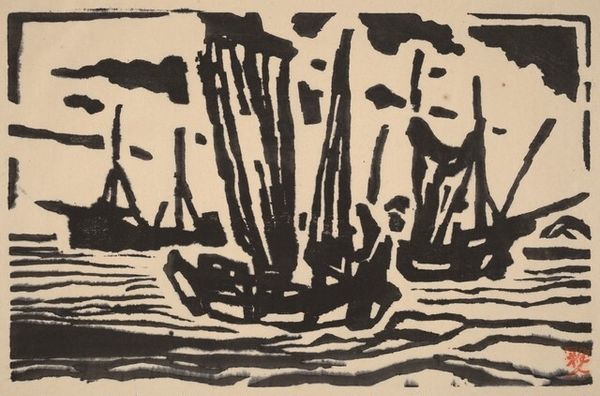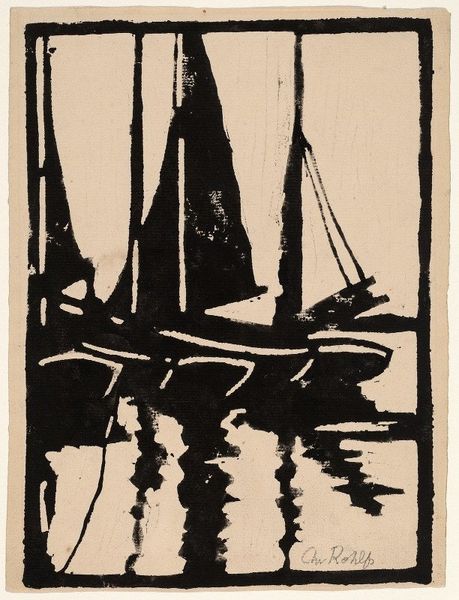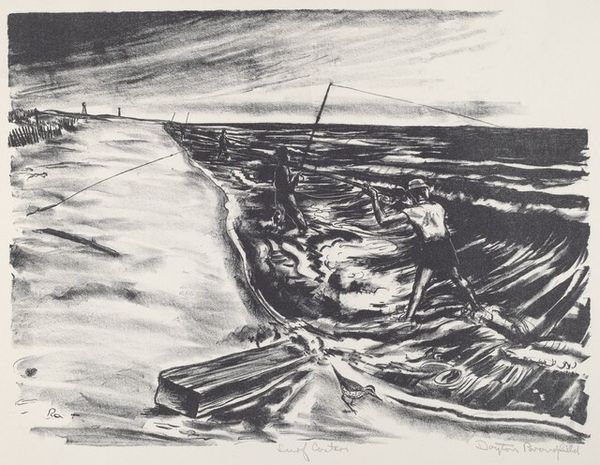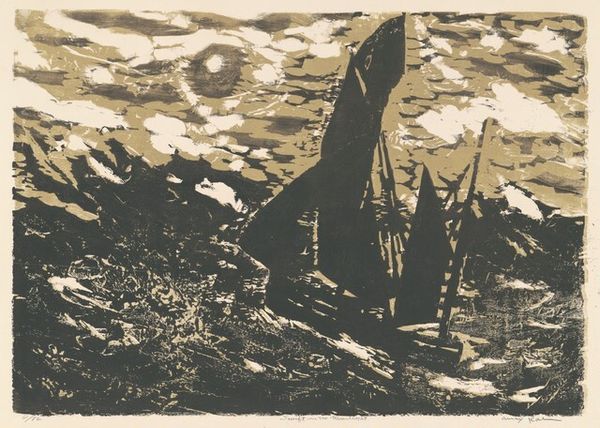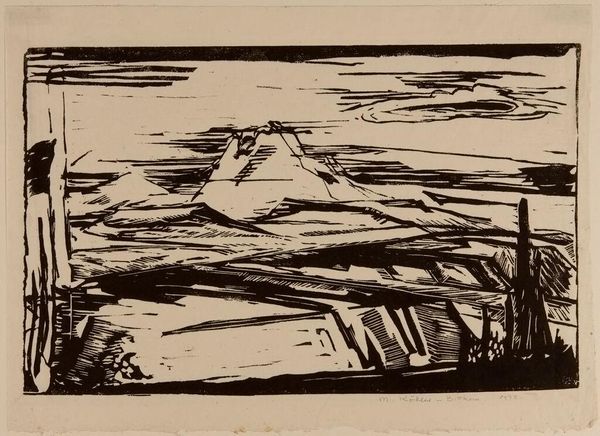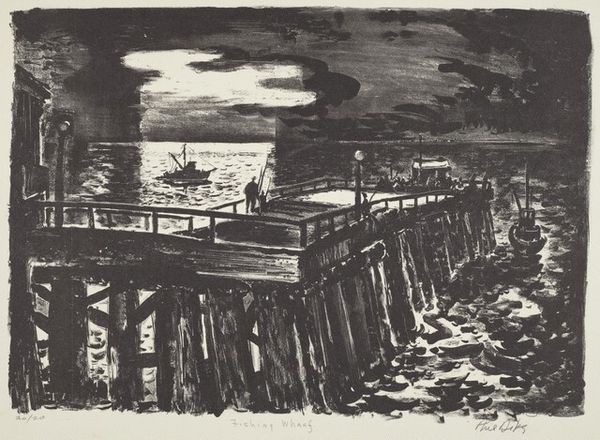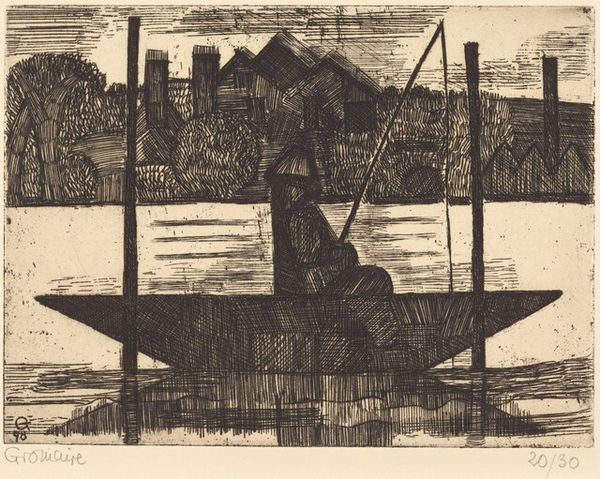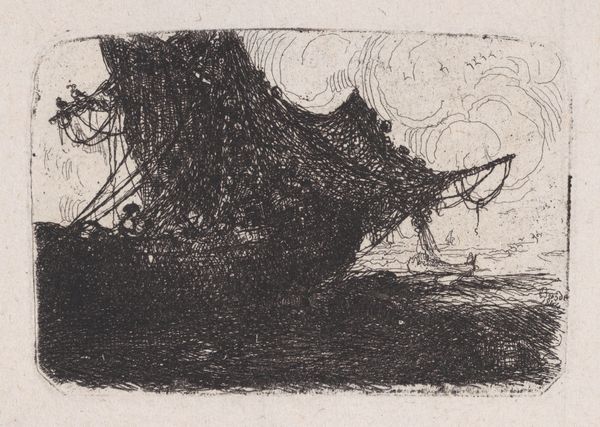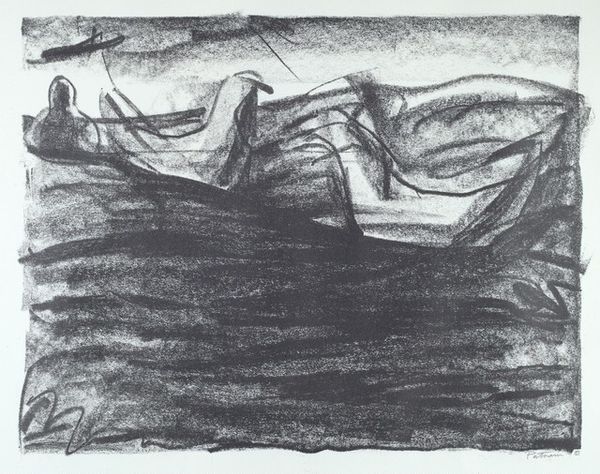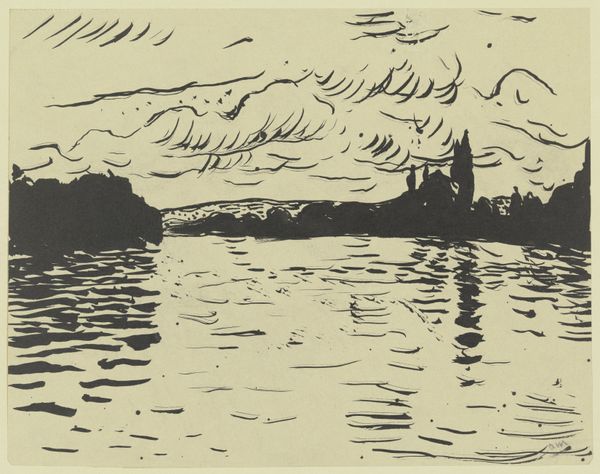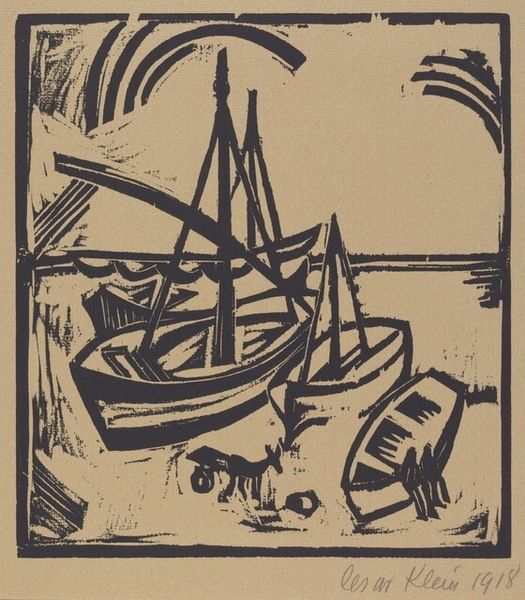
#
random drawing
#
amateur sketch
#
shading to add clarity
# print
#
pen sketch
#
old engraving style
#
incomplete sketchy
#
linocut print
#
ink drawing experimentation
#
pen-ink sketch
#
doodle art
Dimensions: image: 30.32 × 38.58 cm (11 15/16 × 15 3/16 in.) sheet: 39.69 × 48.58 cm (15 5/8 × 19 1/8 in.)
Copyright: National Gallery of Art: CC0 1.0
Editor: Emil Nolde's "Fischdampfer," or "Fish Steamboat," created around 1910. It's a striking print—linocut, I believe. The stark contrast and crude lines give it a raw, almost industrial feel, yet the subject is this vessel on the sea. What do you make of this unusual juxtaposition? Curator: The roughness you’re observing is key. Nolde wasn’t after bourgeois perfection; he embraced the imperfections inherent in the linocut process. It speaks volumes about artistic labor. Consider, the act of carving that block itself--a physically demanding process to render an image, one deeply involved with labor and industrial fishing. What kind of statement do you think he's making with his deliberate lack of polish? Editor: So, by choosing this process he's drawing attention to the labor, making a connection between the material of the artwork and the materiality of fishing itself, like the lives of the fishermen who work those steamboats? It's a rejection of idealized art in favor of something grounded. Curator: Precisely. Think about the distribution of prints, too. They are easily reproduced, easily consumed – widening the reach of a statement piece in ways painting may not achieve. What social circles would originally consume such art, and what did their relationship with production and the act of sailing vessels infer from that time and art piece? Editor: That makes a lot of sense. I'd never really considered the social implications of choosing printmaking like that. It's not just about aesthetics; it's about making art accessible and relevant to broader social realities. I definitely see Nolde's "Fischdampfer" in a new light now. Curator: Indeed. Considering materiality in the artmaking and social background adds many layers. We must challenge boundaries between consumption, artistic labor, and craft, challenging the norm within art appreciation.
Comments
No comments
Be the first to comment and join the conversation on the ultimate creative platform.
